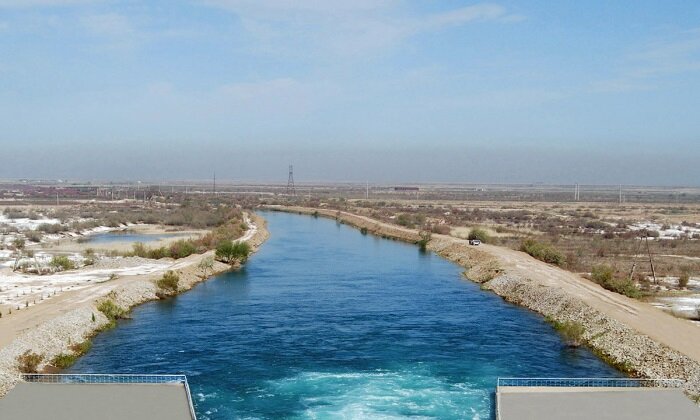Expert Valentin Trapeznikov marked that positive growth rate was recorded in almost all sectors of the economy.
 An observer of Turkmenistan’s economy Valentin Trapeznikov gave an interview to the online media CentralAsia.news. The analyst highlighted the results of 2020, which passed under the 25th anniversary of the neutrality of the state. Considering that the modern world faced difficulties due to the well-known epidemiological situation, the scientist paid special attention to the significant achievements of the country in the national economy.
An observer of Turkmenistan’s economy Valentin Trapeznikov gave an interview to the online media CentralAsia.news. The analyst highlighted the results of 2020, which passed under the 25th anniversary of the neutrality of the state. Considering that the modern world faced difficulties due to the well-known epidemiological situation, the scientist paid special attention to the significant achievements of the country in the national economy.
Stable growth in the main economic sectors
The industrial sector, which occupies a leading position in the structure of the country’s gross domestic product (GDP), showed excellent results. According to the results of 12 months of last year, the share of industry in GDP was about 27,8%. At the same time, the cost of manufactured industrial products exceeded 59 billion manats.
The main part of the value of industrial production was formed by enterprises of the fuel and energy complex (FEC), whose share amounted to more than 40% of the total industrial production.
It must be added that the total volume of industrial production at large and medium-sized enterprises of the electric power, oil, chemical, woodworking, light, and food industries, as well as the production of building materials, have increased in comparison with 2019.
The highest production growth rates in 2020 were recorded among the following types of products: electricity (19.4%), gasoline (10.0%), liquefied petroleum gases (22.4%), polyethylene (more than 2.1 times), polypropylene (25.4%), mineral fertilizers (36.8%), plastic and fiberglass pipes (27.5%), cotton fiber (18.2%).
In addition, the production of pharmaceuticals also increased during this period — the growth rate was 5,5%, fittings, corners and profiles — 3,2%, sheet glass — 1,7%, garments and knitwear — 2,8%, cotton yarn — 4,3%, canned fruits and vegetables — 7,3%, butter — 3,4%, bakery products — 1,2%, pasta — 3,3% and soft drinks by 7,1%.
Contribution of the private sector
A significant contribution to industrial development was also made by the non-state sector of the economy, which increased, in comparison with the previous year: the production of plastic products by 52,2%, plastic, and fiberglass pipes — by 33,9%.
At the same time, an increase was recorded in the production of wall materials. It reached 19,4%, cotton fiber — 14,2%, footwear has increased by 4.7 times. In the food industry, flour increased by 40,2%, fish products — by 8,2%, pasta — by 13,4%, ice cream — by 15,5%, canned fruits, and vegetables — by 8,7%, soft drinks — by 8,6%.
According to the data provided, the state and business sectors organically complement each other. At the same time, the domestic entrepreneurial corps is actively diversifying the areas of industrial activity, regularly mastering all new segments of it and often demonstrates higher indicators compared to the public sector.
Representatives of the Union of Industrialists and Entrepreneurs of Turkmenistan (UIET) are already confidently occupying leading positions in the light and food industries, the fishing industry, and the production of building materials. At the same time, they are increasing their presence in the chemical and polymer industries, as well as developing the production of electronic equipment.
The UIET enterprises take an active part in the implementation of the most important national programs, including programs for import substitution and forcing the export of domestic products.





